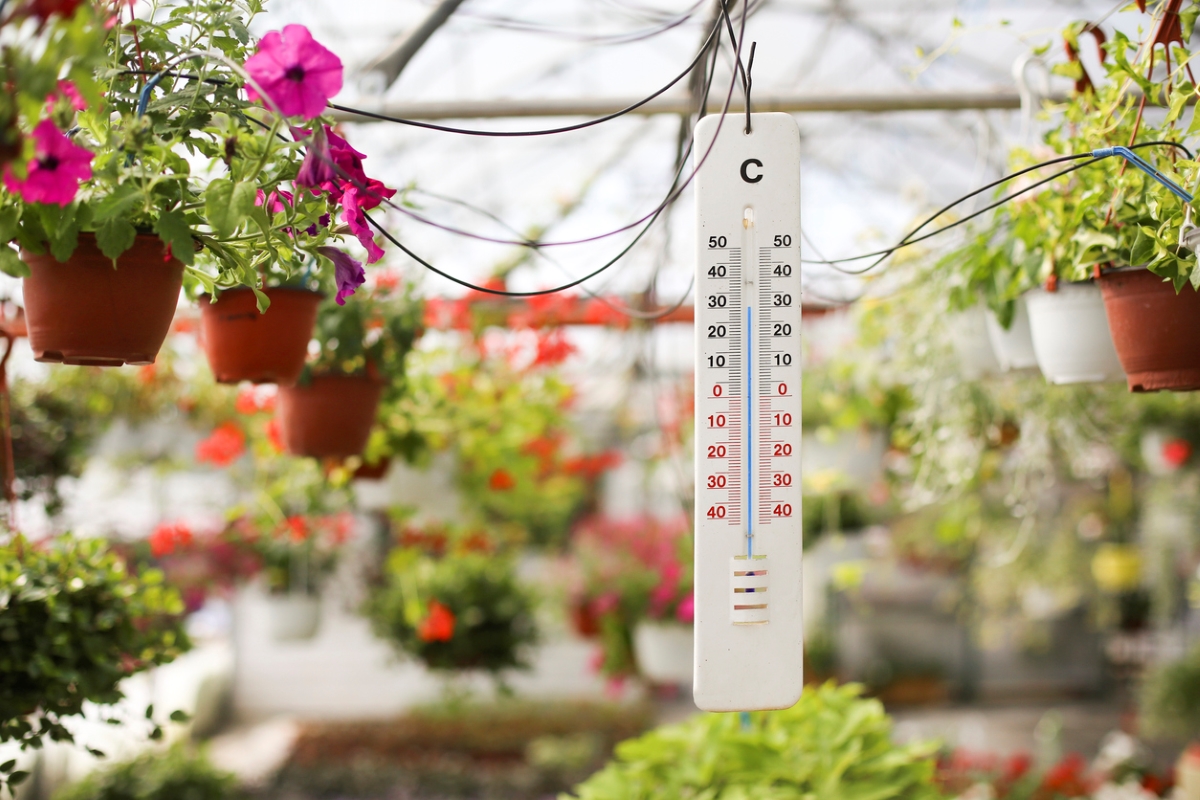We may earn revenue from the products available on this page and participate in affiliate programs. Learn More ›
A greenhouse allows gardeners to grow vegetables year-round, keep tropical plants in bloom, or start seedlings early in the growing season. But not all greenhouse owners know how to keep a greenhouse warm in winter. The matter of how to heat a greenhouse depends on climate, a greenhouse’s size, and what’s growing inside.
A winter greenhouse creates a microclimate with sufficient sunlight, temperature, and humidity to successfully cultivate plants through all seasons. Most crops thrive in temperatures between 64 and 75 degrees Fahrenheit, although many prefer a warmer environment of 80 degrees. The optimal daytime humidity level for most plants is around 80 percent. In cold regions, the right kind of greenhouse insulation can aid the following heating methods while reducing heating costs.
RELATED: The Best Compact Greenhouses Today
1. Solar-Powered Heaters

A solar heater for greenhouse usage can be difficult to find and expensive to operate because of excessive energy demand. It would take 15 100-watt solar panels to generate enough energy for a 1,500-watt heater—that many panels could obscure direct sunlight into the greenhouse, which also might not be strong enough to support all that weight. This would require placing solar panels on the ground or using existing panels.
For this option, the full package would include photovoltaic (PV) solar panels, batteries, a solar charger, inverter, and greenhouse heater—at a cost of $12,000 for enough equipment to heat a 150-square foot space. Installation costs can run $7 to $9 per watt. Heating costs depend on the size of the greenhouse, the amount of sun the location receives, and the overnight temperatures.
Solar panels can last 20 to 25 years (or more) and typically require little to no maintenance, other than periodic cleaning, unless damaged by hail, wind, or lightning.
Best For: Solar power is a pricey greenhouse heating system that works best in milder climates that receive a lot of sunshine.
2. Passive Solar Heating
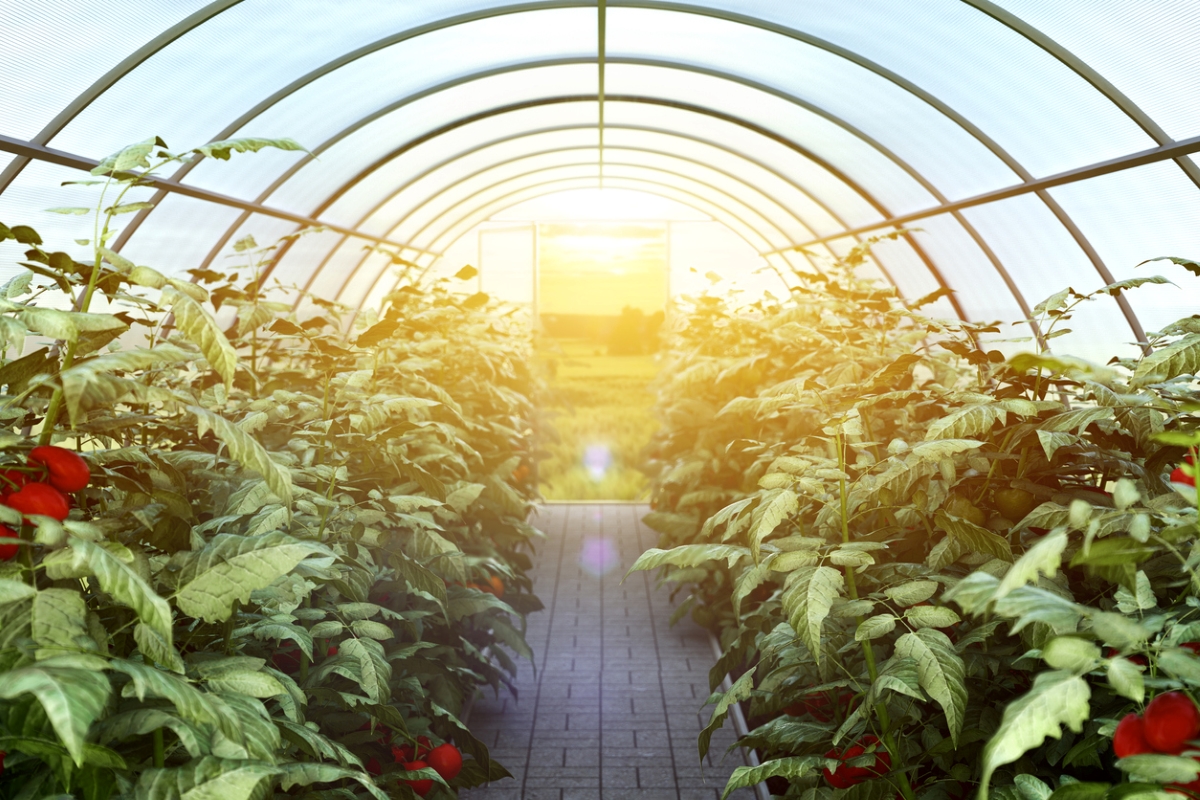
Another way to heat a greenhouse in winter using the sun’s power is passive solar heating: Collecting heat from the sun during the day and releasing it into the greenhouse at night—the basic concept behind greenhouse design.
If you’re building a new greenhouse, here are some effective greenhouse ideas for capturing and storing heat:
- Sinking the floor below the frostline
- Adding thermal mass, such as black 55-gallon water tanks, along the north wall (plan on 2.5 to 5 gallons per square foot and stack them in direct sun)
- Installing extra insulation on the north side
- Painting the south interior wall with white or reflective paint to provide more sun to plants and painting the other walls black to absorb more warmth
- Adding a second layer of polycarbonate to hold warmth inside
- Creating a hot bed or composting pile to generate heat
- Adding a concrete or brick floor to capture heat
Best For: While passive solar heating carries no energy cost, it won’t be sufficient to keep a greenhouse in snow or extreme temperatures warm enough during winter.
3. Geothermal Heating
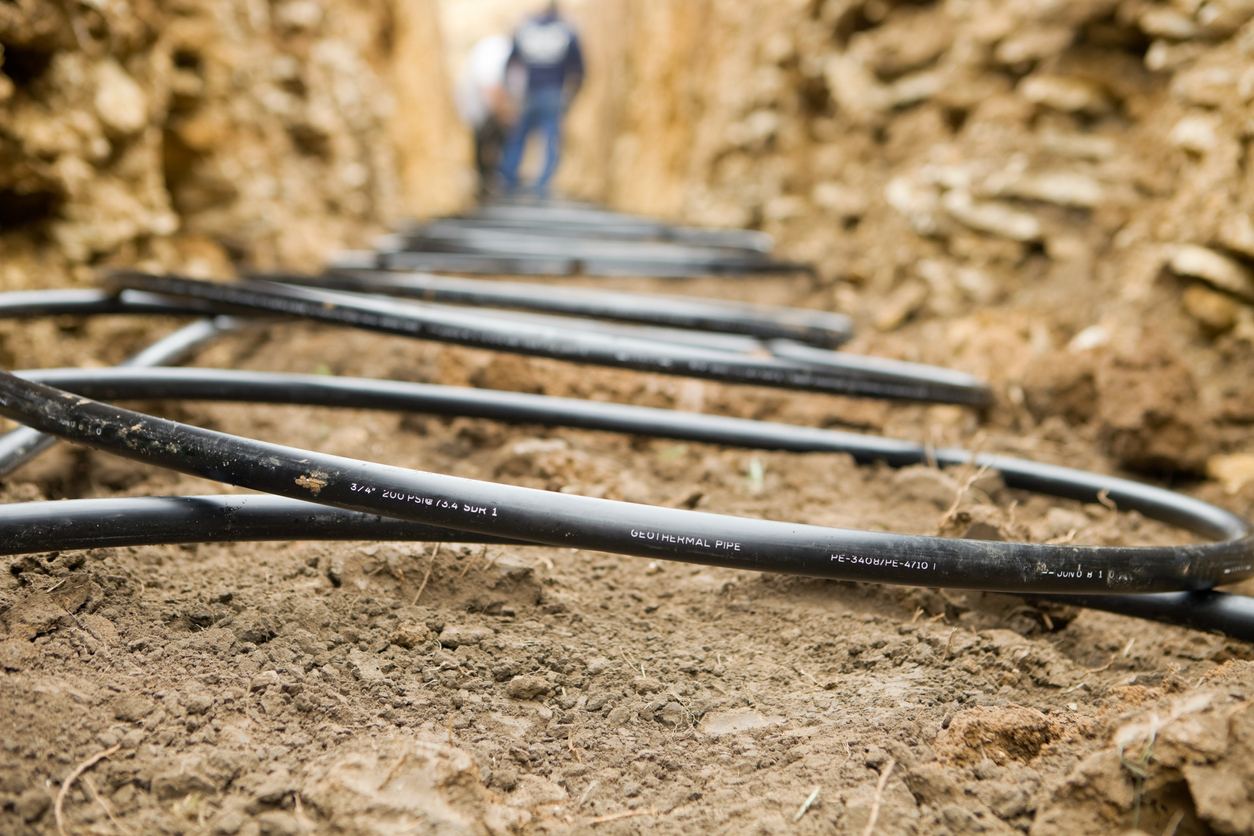
A geothermal greenhouse incorporates piping buried at least 6 to 12 feet below the soil in which either air or liquid travels, capturing heat from the ground and carrying it to a heat exchanger that extracts the heat. Closed-loop systems typically use propylene glycol, methyl alcohol, or antifreeze. Open-loop systems use water pumped from a pond, lake, or well. Pipes can also be coiled beneath a compost pile.
A heat pump is required to maintain the high temperatures needed in a year-round greenhouse, at a cost of a few hundred to over a thousand dollars. Geothermal heating can still be an affordable way to heat a greenhouse; the payback period can take as few as 3 to 7 years.
Best For: Geothermal heating systems are effective in cold climates. Horizontal-loop systems require a large expanse of land, but vertical-loop systems require extensive digging, which can add to the cost of geothermal heating.
4. Electric Forced-Air Heater
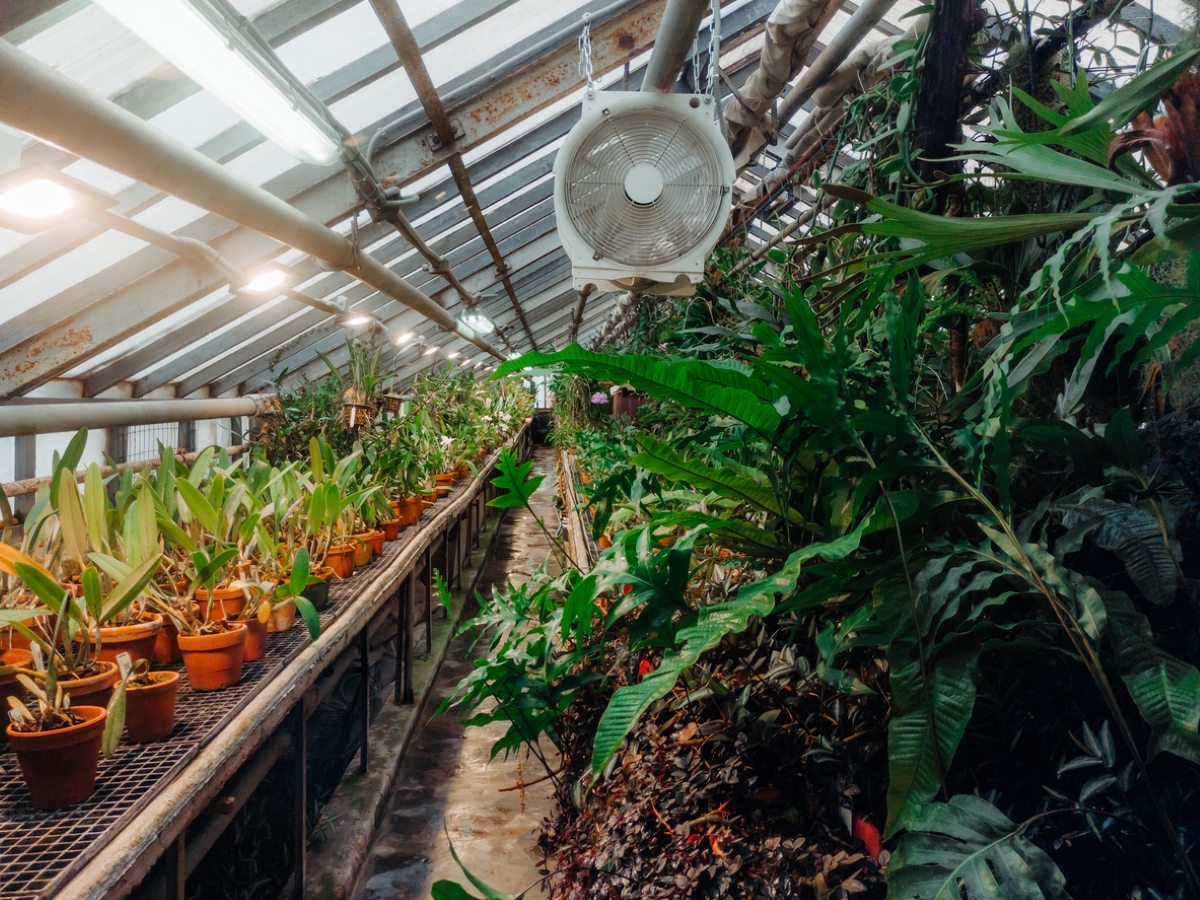
Perhaps the safest, easiest greenhouse heaters to use are electric heaters—as long as the greenhouse has a power supply. These efficient heaters require no ventilation, but users do sacrifice cost for simplicity. Because greenhouses maximize glass surface area to let in an optimal amount of light, they have little insulation, so they don’t hold heat well at night and during winter.
Many forced-air electric heaters are affordable and fairly inexpensive to operate, depending on climate, but may be best for a heated mini greenhouse. At the time of writing, this highly rated Bio Green heater available on Amazon costs under $170 and heats up to 120 square feet. Ceiling-mounted forced-air heaters, such as this Comfort Zone heater that goes for $100 and heats up 1,000 square feet, save space but are still limited in area.
Best For: This easy, safe option is best for smaller greenhouses and areas with occasional cold snaps. Otherwise, the energy costs can become exorbitant.
5. Infrared Heaters
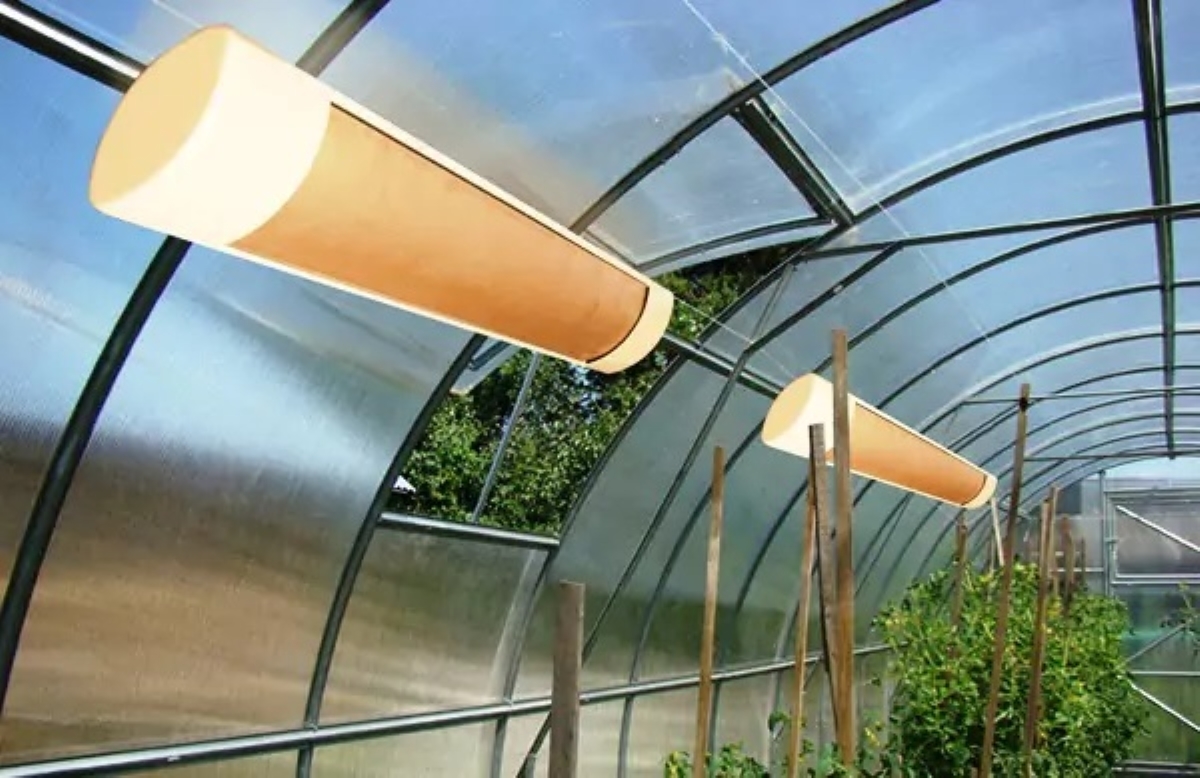
Radiant energy from infrared heaters powered by electricity is another option for greenhouses, particularly when growing bedding plants. Infrared rays transfer heat to objects in the space, such as plants and benches, through radiation in a manner similar to sunlight. They distribute heat evenly, without drafts like those produced by forced-air convection heating.
Since the air isn’t heated, greenhouses with infrared heaters often feel cold. These systems can be more economical because they heat plants, not the surrounding air. However, they may not sustain required nighttime temperatures for tender plants. For large greenhouses, multiple heaters should be staggered to provide even heat.
Best For: Infrared heaters are an economical option that work best with low-growing or bedding plants, particularly in small greenhouses.
6. Oil-filled Heaters
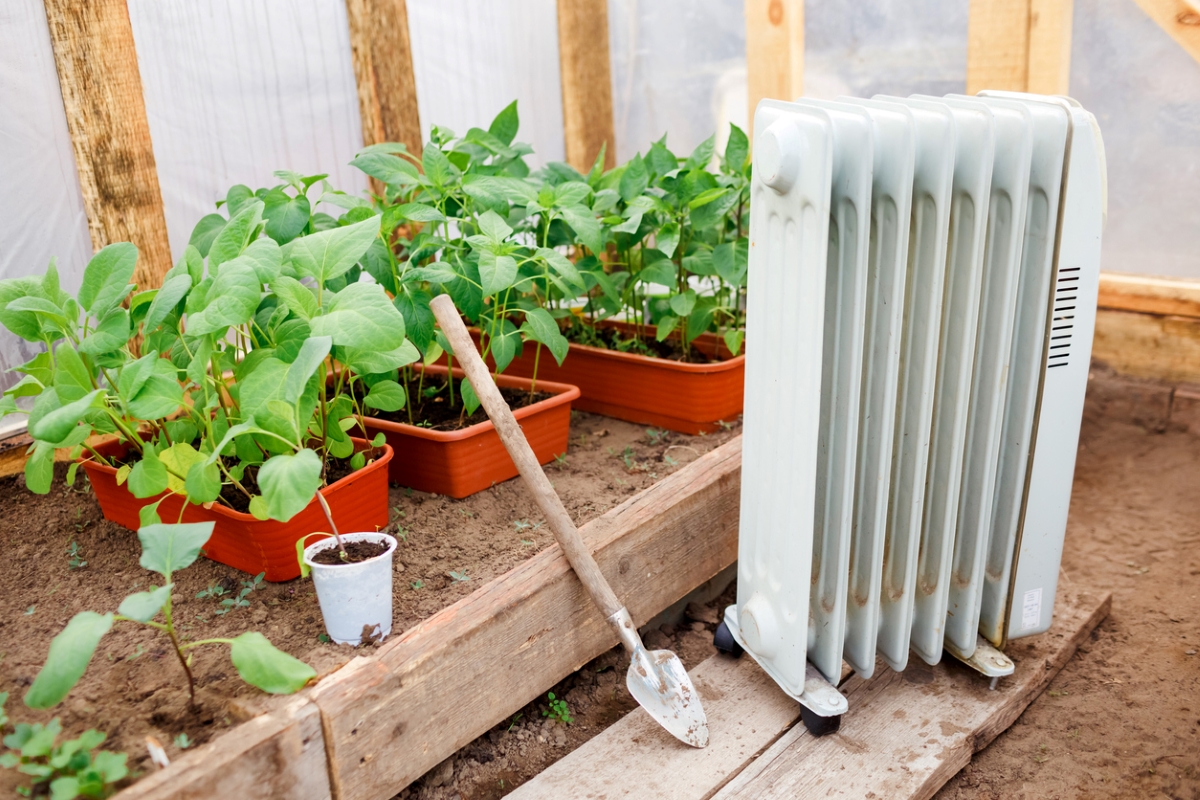
Oil-filled radiator-style heaters, powered by electricity, heat greenhouse air by convection. Electric power heats the oil in the unit, which is then transferred to the air. They don’t put out a lot of heat, but oil heaters do produce a steady flow that can be manually regulated and can be used alongside other types of heaters.
Advantages include a lower cost than typical forced-air electric heaters, which makes them a good choice for greenhouses in cold climates that need heat overnight and on cloudy days. Additionally, oil-filled heaters don’t dry out the air like electric heaters do. They also don’t have a negative impact on humidity, which helps stabilize the temperature and keep the recommended controlled environment.
Best For: Oil-filled heaters are especially useful in regions that don’t get too cold, and this economical source of constant radiant heat doesn’t dry out the air.
7. Kerosene Heater
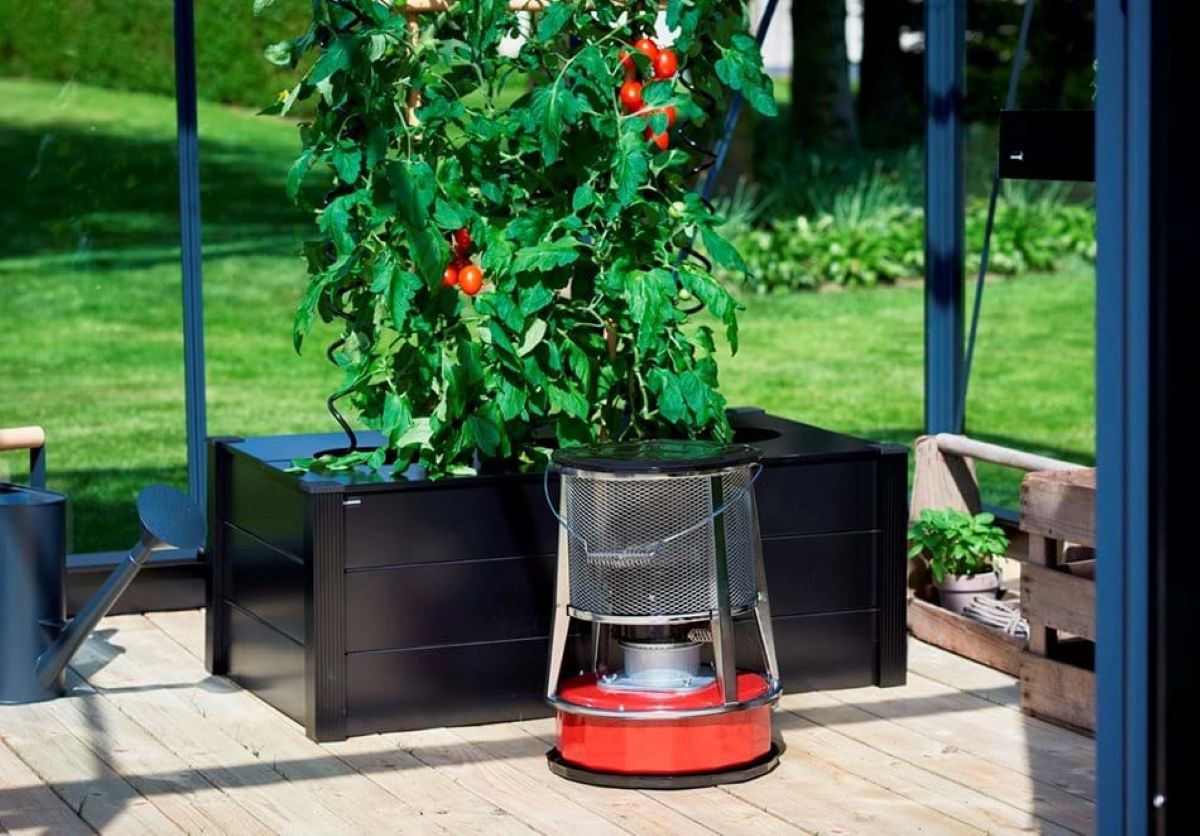
For greenhouses without electrical plug-ins, kerosene heaters offer an option. As a bonus, it usually costs less to heat with kerosene than electricity, even in climates where a heater has to run continuously to keep overnight temperatures high enough for plants.
Although they can generate a lot of heat, the temperature will diminish with distance from the heater. It’s best to place the heater in the center of the space for even heat distribution. Additionally, placing the heater too close to a greenhouse’s polycarbonate or PVC sheeting can melt it. The heater should also be placed out of reach of plants and combustible items, although some units feature an automatic shutoff if they are knocked over. Other downsides of kerosene heaters are that they can dry out the air and require ventilation due to their CO2 output.
Best For: Kerosene heaters are a good choice for greenhouses without electrical power, but caution must be exercised in polycarbonate structures or plastic-covered hoop houses to ensure they don’t melt.
8. Gas Heaters

While gas heaters are generally the least expensive choice, they can pose some concerns. Open-flame gas heaters are a safety risk, and they emit ethylene gas, sulfur dioxide, and carbon monoxide that can lead to bud-drop. These heaters can increase condensation and dripping water in the greenhouse, but they also produce carbon dioxide that plants need for growth.
Portable gas heaters can be regulated by a thermostat to provide a reliable, steady temperature in the greenhouse. However, many open-flame heaters have oxygen sensors that will turn off the unit when oxygen levels are depleted. If they turn off overnight, plants could freeze. Gas heaters with a flue require an opening in the greenhouse through which to exhaust gases. Natural gas heaters can tap into your home’s gas line.
Best For: Gas heaters are best for ventilated greenhouses.
FAQs About Heating a Greenhouse
Determining what kind of heater best suits a greenhouse can be confusing. Much depends on the location of the greenhouse, the materials from which it’s made, its size, local temperatures, and what’s growing in it. The greenhouse’s cost of energy can also be a factor in the decision. Some common questions are answered below.
Q. What is the best method for heating a greenhouse?
Electric heating is the safest way to heat a greenhouse. Adding fans evenly distributes the heat. Gas heating is the least expensive option, but requires venting of gases.
Q. How can I heat my greenhouse in winter without electricity?
Sink the greenhouse into the ground, insulate heavily, add thermal mass objects to absorb and release heat, make compost in the greenhouse, and use paint to reflect and absorb light.
Q. What can I grow in an unheated greenhouse over the winter?
Root crops such as carrots, beets, radishes, and turnips can survive freezing temperatures. Onions, garlic, leeks, parsnips, and rutabagas may also survive in an unheated greenhouse.
Q. What temperature should a greenhouse be in winter?
Optimal temperatures are generally 65 to 70 degrees Fahrenheit during the day, and no lower than about 45 degrees at night, but it depends on what plants are growing in the greenhouse.
Q. Should I open my plastic greenhouse during the day?
If temperatures warrant it, opening doors and vents on sunny days allows fresh air to circulate; just remember to close them at night.

